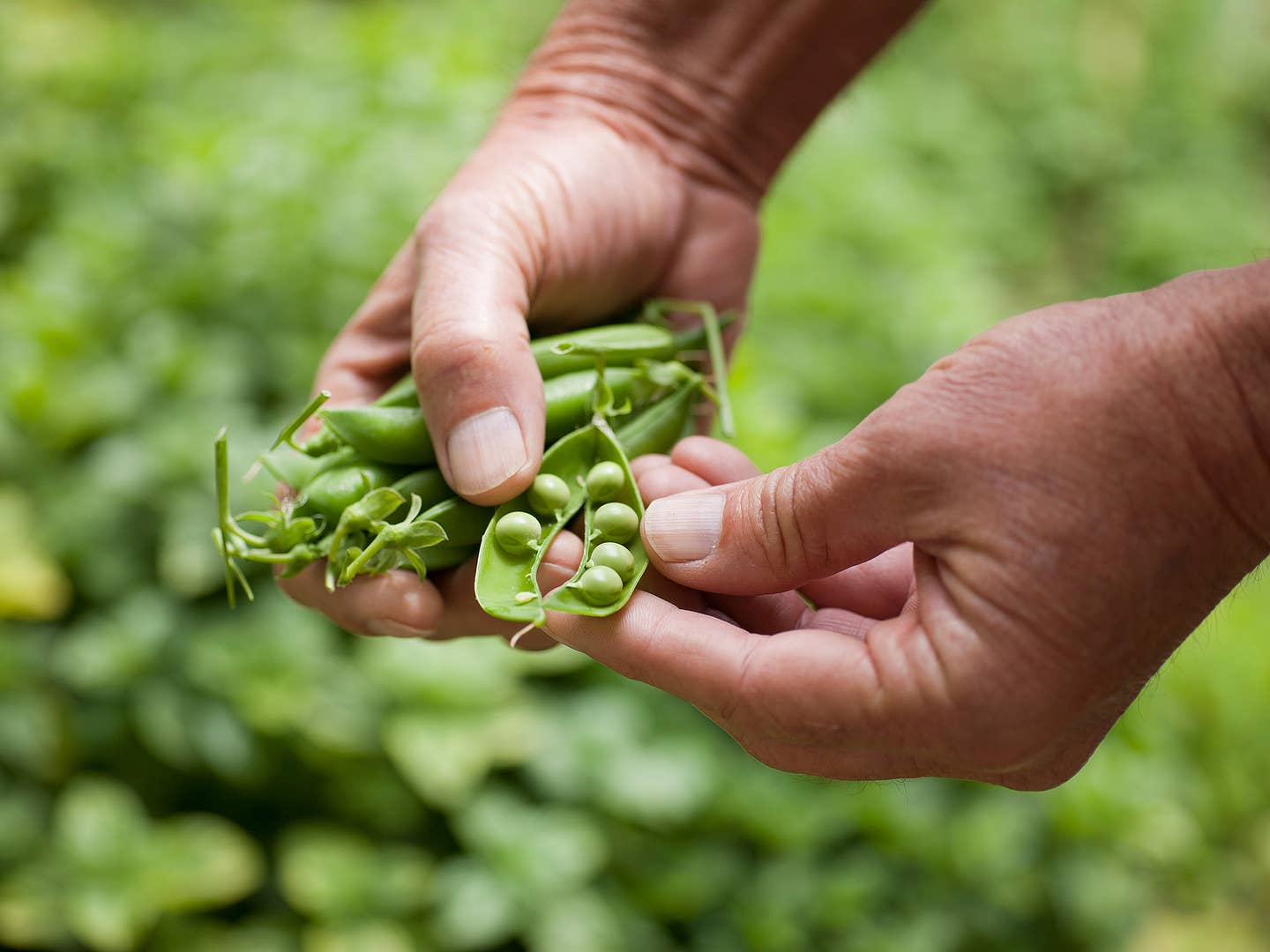
Building a Garden: All About Peas
In part two of our ongoing series about growing the Best Edible Garden Ever, it’s time to start planting
It’s not intentional, I know that, but listening to Shawn Connell of GrowNYC talk about planting, I can’t help but think that plants are all, in their own way, real divas. We’re talking about planting, specifically what we should be putting in the ground right now (even though he and I are still shivering in 40 degree temperatures and high wind at his teaching garden on Governors Island in the middle of New York Harbor), and from his encyclopedic memory he’s rattling off a list of who likes it chilly, who likes it hot, who likes it sunny, who likes it shady, who likes to climb, who likes to hang out in the dirt. Plants, it turns out, are picky. But Shawn only has two guiding principles for what you should be planting: “We pick varieties that are delicious and produce a lot,” he says.
With our raised beds all ready, we start, then, with some of the stars of the early spring garden. Like peas.
A season's planting calendar revolves around the frost date: The day after which there shouldn't be any frost in your region (many agricultural departments at universities publish frost dates for local areas; a simple Google search should uncover yours). That date dictates when plants can safely go into the ground. But peas, because they are awesome, can go into the ground as soon as it isn't frozen—even before the frost date. They can HANDLE IT.
From the way he talks about them, you can tell that Shawn really digs peas, and not just for their flavor. Shawn likes the Oregon Giant variety of snow pea in particular (technically, snow peas are any peas eaten in whole pods) because of their sweetness and high yield. If you want to grow the kind of peas that need to be shelled, go for it; they’ll just take a little longer to mature.
Shawn plants his seeds an inch deep and an inch apart in the soil and then allows around 60 days for them to flower, and then for those flowers to turn to pods for picking. He recommends you stagger the timing of your pea plantings—pea pods are pickable for around two weeks before the plant is done for the season, so if you stagger their planting dates (say, a week and a half apart), you'll have fresh peas for longer periods of time.
Another great thing about peas: They are good for the soil. They replenish it with nitrogen after other plants (like those greedy but delicious nightshades: tomatoes, peppers) take it all away for themselves. So plant peas where you've previously had tomatoes (or vice versa) to ensure your soil's health.
Lastly, remember that peas like to climb, so rig some string or netting next to the plants to give their tendrils something to grab on to.
Working with Shawn, I’m realizing that gardening isn’t really for people—like me—who take an instant gratification approach to food. I tend to want what I want when I want it. But when I complain to Shawn that 60 days is a lot to wait for peas, he reminds me that there are vegetables we can plant right now that will be pickable almost immediately.
That's the beauty of leafy greens. They don't mind the cold and some grow quite quickly. Try loose-leaf varieties, the kinds you snip and collect by the leaf rather than by the head (like mesculin). You can sometimes get three or four clippings from them before it gets too warm and they bolt, or flower. Some seed companies sell lettuce mixes that can be planted altogether and yield a whole salad in one place. Shawn recommends Johnny's Ovation mix, which includes red mustard, mizuna, tatsoi, and arugula. Start snipping around three weeks after planting, then every two weeks after that until they stop growing back.
As the wind whips through the garden, almost toppling a pea trellis, Shawn remains optimistic about the weather. “I just want it to get warm!” he says. “And I know it will.” But since his garden is a teaching garden, and school kids are scheduled to come whether the plants grow on schedule or not, he has already come up with a backup plan. “If it stays cold, I’m going to the store and buying potatoes and shoving them in the dirt. No one will know!”
Missed the first installment of Building a Garden? Find it here.
Keep Reading
Continue to Next Story










